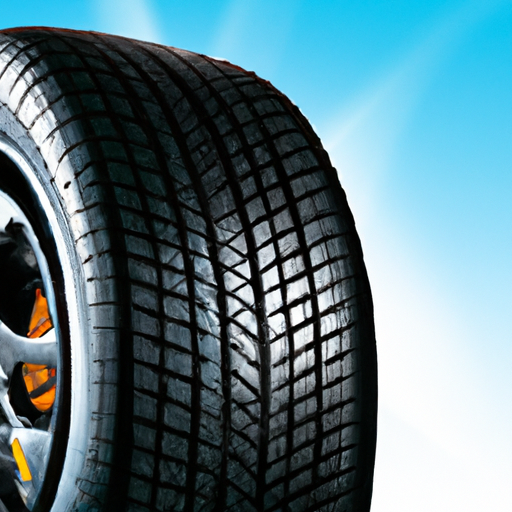Thinking of switching to summer tires for your vehicle? You might be wondering if these tires can be used on vehicles with different drivetrain types. The answer might surprise you! In this article, we’ll explore the compatibility of summer tires with various drivetrain types and provide you with all the information you need to make an informed decision. So, buckle up and get ready to hit the road with confidence this summer!
Can Summer Tires Be Used On Vehicles With Different Drivetrain Types?
Understanding Summer Tires
When it comes to choosing the right tires for your vehicle, it’s important to consider the specific drivetrain type. One common question that arises is whether summer tires can be used on vehicles with different drivetrain types. To answer this question, let’s first understand what summer tires are.
What are Summer Tires?
Summer tires, also known as performance tires, are designed to provide optimal performance and handling in warm weather conditions. They are specifically engineered to offer excellent grip on dry and hot surfaces, allowing for enhanced maneuverability and responsive braking. Summer tires are often made from a softer rubber compound that becomes too hard in colder temperatures, resulting in reduced traction and grip.
Characteristics of Summer Tires
Summer tires have several characteristics that make them suitable for warm weather conditions. They typically have a unique tread pattern, with wide circumferential grooves and large outer shoulder blocks. This design allows for improved water evacuation, reducing the risk of hydroplaning. Summer tires also have a stiffer sidewall construction, which enhances cornering stability and precise steering response. These features contribute to the superior performance of summer tires on dry roads.
Ideal Conditions for Using Summer Tires
Summer tires perform best in temperatures above 45 degrees Fahrenheit (7 degrees Celsius). In these conditions, the rubber compound of summer tires maintains optimal flexibility, allowing for maximum traction and grip. It’s worth noting that summer tires are not recommended for use in winter or cold weather conditions, as their performance significantly diminishes in lower temperatures. To ensure their longevity and safety, it is crucial to switch to winter or all-season tires when the temperatures drop.
Different Drivetrain Types
To understand the implications of using summer tires on different drivetrain types, let’s take a closer look at the various drivetrain configurations commonly found in vehicles.
Front-Wheel Drive (FWD)
Front-wheel drive vehicles have their powertrain components, such as the engine and transmission, located in the front of the vehicle. The front wheels are responsible for both propulsion and steering. FWD vehicles have a weight distribution that is biased towards the front, which can impact tire performance and handling.
Rear-Wheel Drive (RWD)
In rear-wheel drive vehicles, the powertrain components are located at the rear, and the rear wheels are responsible for propulsion. RWD vehicles typically have better weight distribution compared to FWD vehicles, with a more balanced front-to-rear weight ratio. This can affect how the tires interact with the road surface.
All-Wheel Drive (AWD)
All-wheel drive vehicles distribute power to all four wheels, providing better traction and stability on various road surfaces. AWD systems are typically designed to automatically transfer power between the front and rear wheels based on the driving conditions. The tire performance on AWD vehicles is influenced by both the front and rear axle characteristics.
Four-Wheel Drive (4WD)
Four-wheel drive vehicles are designed for off-road and rugged terrain applications. They are typically equipped with a transfer case that allows the driver to manually switch between two-wheel drive and four-wheel drive modes. Tire performance on 4WD vehicles is influenced by various factors, including the transfer of power between the front and rear axles and the differentials.
Implications of Using Summer Tires on Different Drivetrain Types
Now that we have a basic understanding of summer tires and different drivetrain types, let’s explore the implications of using summer tires on each drivetrain configuration.
Safety Concerns
Safety should always be the top priority when it comes to selecting tires for your vehicle. Using summer tires on the wrong drivetrain type can compromise your safety on the road. The performance characteristics of summer tires, such as their grip and traction, are optimized for specific drivetrain configurations. Using summer tires on a drivetrain for which they are not designed can lead to decreased control and handling, especially in adverse weather conditions.
Tire Performance and Traction
The performance of summer tires can be affected by the drivetrain type. FWD vehicles, for example, may experience increased tire wear and decreased traction due to the weight distribution bias towards the front. RWD vehicles, on the other hand, may benefit from the added traction provided by summer tires on the rear wheels. AWD and 4WD vehicles require careful consideration, as improper tire selection could result in imbalanced performance between the front and rear axles.
Effects on Vehicle Handling and Stability
The handling and stability of a vehicle can be significantly impacted by the choice of tires. Summer tires are designed to provide precise handling and responsive steering, which may not translate well with certain drivetrain types. For instance, using summer tires on a FWD vehicle may result in increased understeer, where the front tires lose traction during cornering. Similarly, using summer tires on a RWD vehicle may result in increased oversteer, where the rear tires lose traction during cornering.
1. Front-Wheel Drive Vehicles
Front-wheel drive vehicles are commonly used for everyday commuting and are known for their fuel efficiency and compact size. When it comes to using summer tires on FWD vehicles, there are both advantages and disadvantages to consider.
Advantages of Using Summer Tires on FWD Vehicles
One advantage of using summer tires on FWD vehicles is the improved traction and grip on the front wheels. Since the front wheels of an FWD vehicle handle both propulsion and steering, having enhanced traction can result in better acceleration and cornering performance. Summer tires’ characteristics, such as their stiffer sidewalls and unique tread pattern, can further enhance the handling capabilities of FWD vehicles.
Disadvantages of Using Summer Tires on FWD Vehicles
While using summer tires on FWD vehicles can provide advantages in terms of traction and grip, it’s important to note the potential drawbacks. The weight distribution bias towards the front can lead to increased wear and tear on the front tires. Additionally, FWD vehicles tend to have limited weight transfer during acceleration, which means the rear tires might not benefit from the improved traction provided by summer tires.
2. Rear-Wheel Drive Vehicles
Rear-wheel drive vehicles are often associated with sports cars and luxury sedans, offering a more dynamic driving experience. Let’s explore the implications of using summer tires on RWD vehicles.
Advantages of Using Summer Tires on RWD Vehicles
RWD vehicles can benefit from using summer tires on the rear wheels. The increased traction and grip provided by summer tires on the rear axle can enhance acceleration and cornering performance. The stiffer sidewalls of summer tires contribute to improved stability during high-speed maneuvers, allowing for better control and responsiveness.
Disadvantages of Using Summer Tires on RWD Vehicles
Using summer tires on RWD vehicles can have certain drawbacks. The weight distribution of RWD vehicles is typically more balanced than FWD vehicles, which can lead to more even tire wear. However, the increased traction provided by summer tires on the rear axle can result in reduced traction on the front wheels, potentially compromising steering and handling performance.
3. All-Wheel Drive Vehicles
All-wheel drive vehicles are becoming increasingly popular, offering improved traction and stability on various road surfaces. Let’s examine the implications of using summer tires on AWD vehicles.
Advantages of Using Summer Tires on AWD Vehicles
Using summer tires on AWD vehicles can provide several advantages. AWD vehicles benefit from the added traction and grip offered by summer tires on all four wheels. The enhanced performance and handling characteristics of summer tires can complement the capabilities of AWD systems, resulting in improved acceleration, cornering, and overall driving experience.
Disadvantages of Using Summer Tires on AWD Vehicles
While using summer tires on AWD vehicles can offer advantages in terms of traction and performance, there are potential drawbacks to consider. If the front and rear tires have different levels of grip, it can cause handling imbalances and compromise the overall stability of the vehicle. It is crucial to ensure that the summer tires chosen for an AWD vehicle provide balanced performance characteristics to maintain optimal handling and control.
4. Four-Wheel Drive Vehicles
Four-wheel drive vehicles excel in off-road and challenging driving conditions, delivering power to all four wheels simultaneously. Let’s explore the implications of using summer tires on 4WD vehicles.
Advantages of Using Summer Tires on 4WD Vehicles
Using summer tires on 4WD vehicles can offer specific benefits. Summer tires, with their superior grip and traction on dry surfaces, can enhance the off-road capabilities of 4WD vehicles. The precise handling and responsiveness of summer tires can contribute to improved control and maneuverability in various driving conditions.
Disadvantages of Using Summer Tires on 4WD Vehicles
It’s important to consider the drawbacks of using summer tires on 4WD vehicles. Off-road driving often involves challenging terrain and adverse weather conditions. Summer tires, designed for warm and dry conditions, may struggle to provide sufficient traction on muddy, snowy, or wet surfaces. While summer tires can enhance the performance of 4WD vehicles in certain situations, they may not be the best choice for all off-road adventures.

Benefits and Drawbacks of Using Summer Tires on Different Drivetrain Types
Now that we have examined the implications of using summer tires on various drivetrain types, let’s summarize the benefits and drawbacks.
Improved Performance and Handling
Using summer tires on the appropriate drivetrain type can result in improved performance and handling characteristics. The enhanced traction and grip provided by summer tires can enhance acceleration, cornering, and overall driving experience. Summer tires’ stiffer sidewalls and unique tread pattern contribute to precise steering response and increased stability during high-speed maneuvers.
Enhanced Traction and Braking
Summer tires excel in providing exceptional traction and braking performance on dry and hot surfaces. When used on the right drivetrain type, summer tires can optimize the available grip, allowing for shorter braking distances and increased control during acceleration. The superior traction provided by summer tires can significantly improve the overall safety and driving dynamics of a vehicle.
Reduced Fuel Consumption
Summer tires have a lower rolling resistance compared to all-season or winter tires. The reduced friction between the tires and the road surface can result in improved fuel efficiency. This means that using summer tires on the appropriate drivetrain type may help save on fuel costs and reduce the vehicle’s carbon footprint.
Increased Wear and Tear
The performance characteristics of summer tires, such as their softer rubber compound, make them susceptible to increased wear and tear. When used on a drivetrain configuration that is not optimized for their specific characteristics, summer tires may wear out more quickly. It’s important to regularly inspect the tires and replace them when their tread depth becomes inadequate, regardless of the drivetrain type.
Limited Winter and Wet Performance
One significant drawback of using summer tires on any drivetrain configuration is their limited performance in winter and wet conditions. The optimized performance of summer tires in warm weather can be compromised in colder temperatures, reducing their grip and traction. It is essential to switch to winter or all-season tires when the temperatures drop to ensure safe driving in slippery and icy conditions.

Choosing the Right Tires for Your Vehicle
Selecting the right tires for your vehicle involves several factors, including the specific drivetrain type. Here are some key considerations to keep in mind when choosing tires for your vehicle.
Considerations for Selecting Summer Tires
If you decide to go with summer tires, it’s crucial to consider your driving conditions and the climate in which you primarily drive. If you live in an area with consistently warm and dry weather, summer tires can be a great choice. However, if you experience significant temperature fluctuations or encounter cold and wet conditions, it’s recommended to opt for all-season or winter tires.
Matching Tires with Drivetrain Type
To ensure optimal performance and safety, it’s important to match the tires with the drivetrain type. Front-wheel drive vehicles may benefit from the increased traction provided by summer tires on the front wheels. Rear-wheel drive vehicles can take advantage of the enhanced grip and stability offered by summer tires on the rear axle. AWD and 4WD vehicles require careful consideration, with a focus on selecting summer tires that provide balanced performance characteristics for both the front and rear axles.
Consulting with Professionals
If you are unsure about which tires to choose for your vehicle and drivetrain type, it’s always a good idea to consult with professionals. Tire experts can provide valuable insights and recommendations based on your specific driving needs and the characteristics of your vehicle. They can help you navigate the wide range of tire options available, ensuring that you make an informed decision.
Tire Maintenance and Regular Inspections
Once you have chosen the right tires for your vehicle and drivetrain type, it’s essential to prioritize tire maintenance and regular inspections. Checking your tire pressure, rotating the tires, and monitoring the tread wear are all important aspects of tire maintenance. Regular inspections can help identify any issues or abnormalities with the tires, ensuring that they remain in good condition and provide optimal performance and safety.
In conclusion, while summer tires can offer enhanced performance and handling, it’s important to consider the implications of using them on different drivetrain types. Each drivetrain configuration has its own unique characteristics that can influence tire performance, traction, and handling. By understanding these implications and considering the specific needs of your vehicle and driving conditions, you can make an informed decision when choosing the right tires for your vehicle. Remember to always prioritize safety and consult with professionals for guidance when in doubt.


